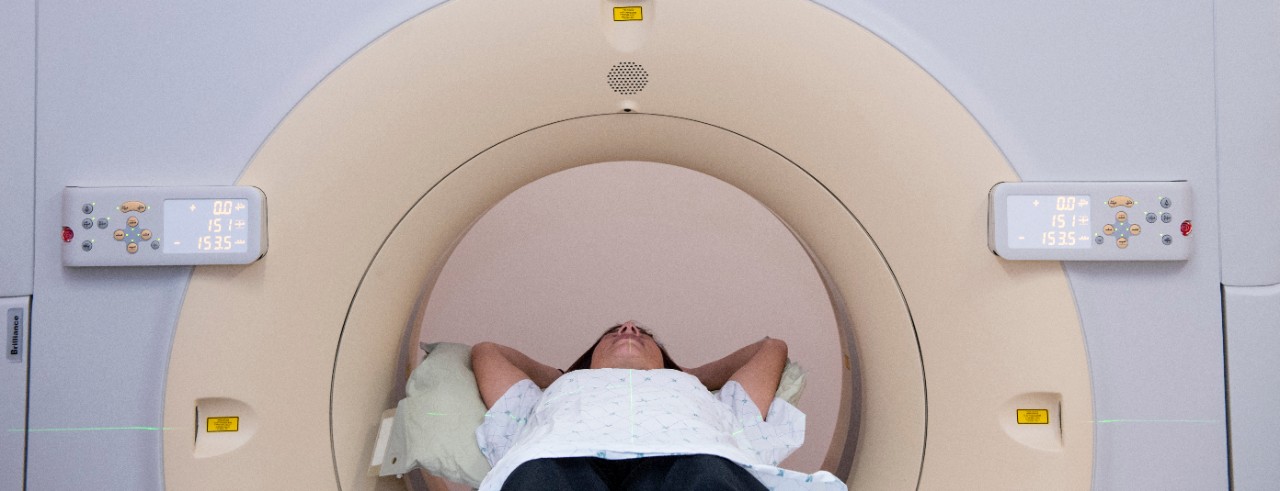
UC radiation oncology experts present at national conference
Head and neck, lung, brain tumor research highlights ASTRO abstracts
University of Cincinnati Cancer Center researchers will present abstracts at the American Society for Radiation Oncology (ASTRO) Annual Meeting, held Oct. 1-4 in San Diego.
Lattice therapy shows promise for safer, more effective treatment
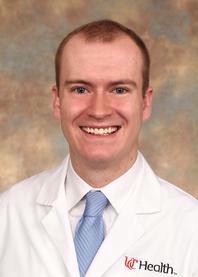
Andrew Frankart, MD. Photo/University of Cincinnati.
In standard radiation treatment, entire tumors receive the same dose of radiation. Cancer Center researchers including Andrew Frankart, MD, are testing the application of a different method called lattice therapy, and he will present three posters detailing research into lattice therapy at ASTRO.
“In comparison to a standard radiation plan, lattice therapy delivers higher doses to parts of a tumor and lower doses to other parts,” said Frankart, MD, a Cancer Center physician-researcher and assistant professor of radiation oncology in UC’s College of Medicine. “This has the potential to both improve anti-tumor effects and lead to safer delivery of radiation, especially for large tumors that currently do not respond well to treatment.”
Lattice therapy is a relatively new form of radiation therapy, and there is not currently a standard approach to plan and deliver the therapy to patients.
“These projects evaluated our ability to generate these complex plans in a timeframe that is feasible for clinical use and to effectively apply these plans to tumors in various challenging sites in the body,” Frankart said.
The studies used an automated planning approach created by Cancer Center medical physicist Nitin Kumar, MS, via computer-based modeling of representative tumors in the UC Department of Radiation Oncology’s treatment planning system. The team found they were able to generate lattice plans in an average of 20 minutes. Traditional radiation plans take several hours to put together.
“Essentially, our planning approach takes a tumor of a given shape and size and automatically develops a plan to distribute high- and low-dose regions according to criteria we set for each tumor,” Frankart said. “These plans were feasible to deliver in large head and neck and liver tumors, accomplishing our dual aims of increasing dose within tumors while minimizing exposure of normal tissues.”
The team now plans to test lattice therapy in a clinical trial for patients with large tumors that are currently not as responsive to treatment, with the hope to apply the technique more broadly in the future.
Trial examines gland-sparing radiotherapy to improve dry mouth symptoms
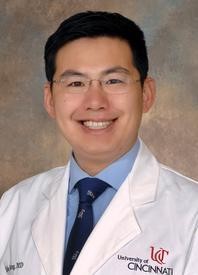
Kyle Wang, MD. Photo/University of Cincinnati.
For patients with cancer that has spread to the brain, whole brain radiotherapy (WBRT) is used as a palliative treatment and typically includes the whole brain in the field of radiation. Previous research has found that standard practice causes bothersome dry mouth for patients due to radiation reaching the parotid glands, which are salivary glands located in front of each ear.
Prior to joining UC’s faculty, Kyle Wang, MD, led a Phase 3 quality of life trial at the University of North Carolina that examined WBRT that avoided the parotid glands, with a goal of improving dry mouth symptoms.
Wang said the study closed early, but patients randomized to receive parotid-sparing treatment had lower rates of dry mouth at the end of radiation and one month after treatment. Other statistical trends favored the use of parotid-sparing WBRT.
“Though focal radiation is preferred for brain metastases, tens of thousands of patients are not candidates and receive WBRT for brain metastases across the country and world,” said Wang, a Cancer Center physician-researcher and assistant professor of Radiation Oncology in UC’s College of Medicine. “Given that these patients have poor prognoses, parotid-sparing is a simple technique to maintain one aspect of their quality of life.”
Student research highlights ideal treatment time for oral cavity cancer
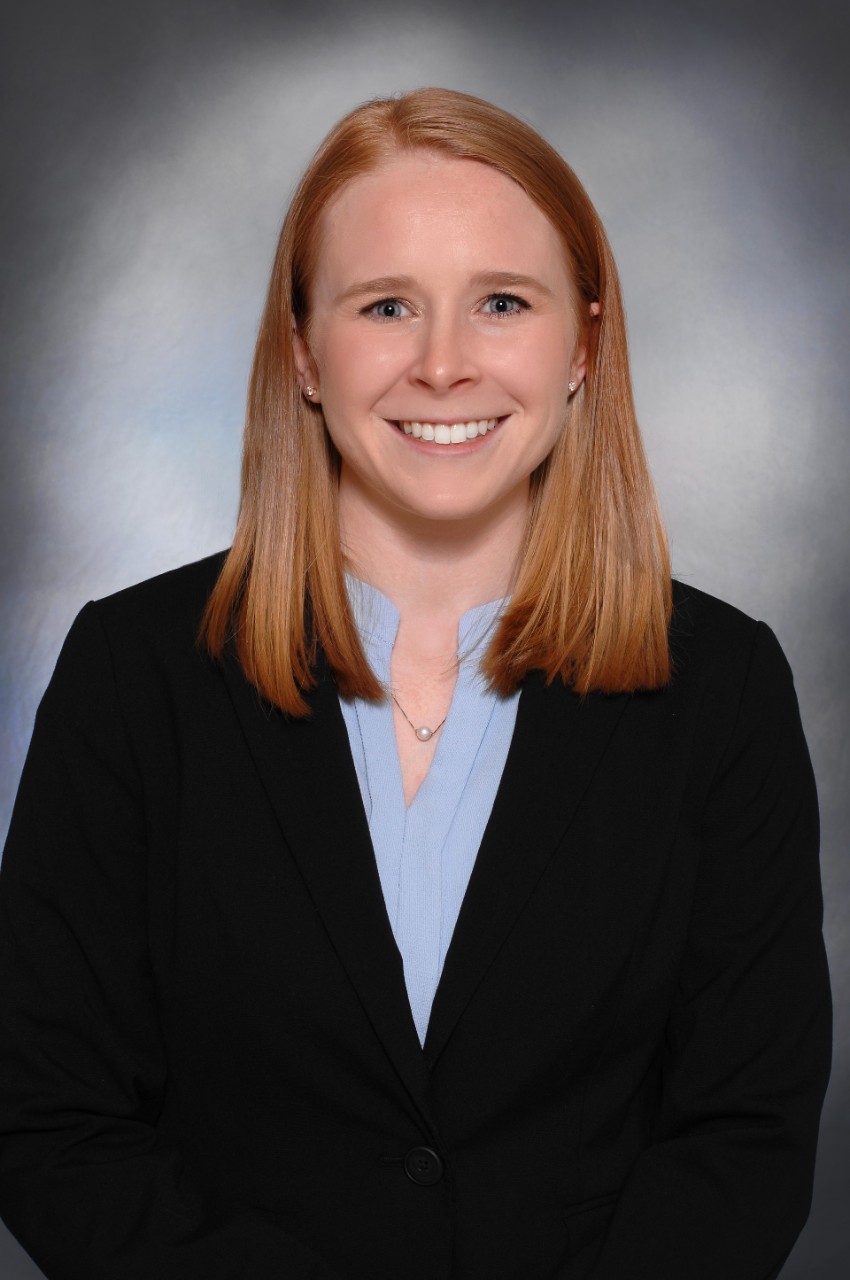
Taylor Petery. Photo/provided.
Patients with oral cavity cancers (including tongue cancers) typically are treated with surgery followed by radiation and sometimes chemotherapy. But how does the total length of time from the start to the end of treatments, known as treatment package time (TPT), affect patient outcomes?
That was the question UC College of Medicine student Taylor Petery asked in a recent study. Looking at a large patient cohort treated at the Cancer Center, Petery found it is ideal for oral cavity cancer patients to complete all of their treatments in 105 days or less. A TPT longer than that was significantly associated with worse overall survival and recurrence rates.
Petery also found that delays including the cancer being at a more advanced stage and patients’ smoking status independently led to worse survival outcomes. In the cohort, 56% of patients required hospitalization between surgery and radiation, and 76% were prior or current smokers at the time of diagnosis.
“Future studies and analysis would hope to identify and characterize factors contributing to treatment delay and minimizing TPT,” Petery said. “Smoking history should be further explored for its potential contribution to treatment delay, as should the causes of prolonged postoperative hospitalization and unexpected readmissions.”
Surveillance following lung cancer treatment can vary, review finds
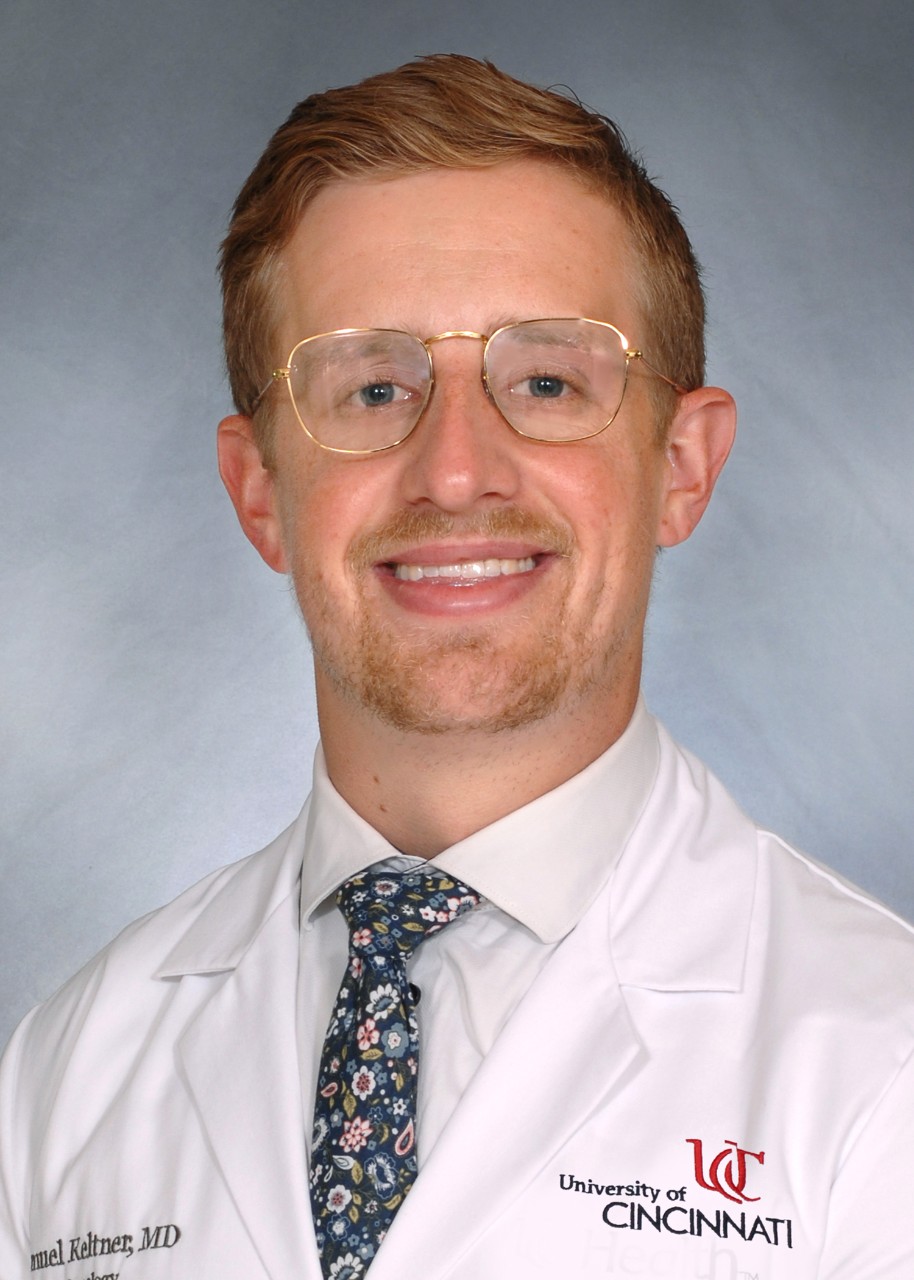
Samuel Keltner, MD. Photo/University of Cincinnati.
Radiation is a common treatment for early stage lung cancer, but there is no standard of care for how to conduct follow-up surveillance of patients following this treatment.
Samuel Keltner, MD, and colleagues looked at records of patients who had at least three years of follow-up to evaluate surveillance and recurrence patterns.
“The most important findings were that certain patients may be able to get fewer CT scans after treatment while others may need more frequent scans,” said Keltner, a Radiation Oncology resident at the Cancer Center. “Surveillance guidelines should continue to recommend surveillance five years after treatment, consider watching larger lesions more closely, and decrease scan frequency for lower risk patients.”
Study examines neurologic effects of additional radiation for brain tumors
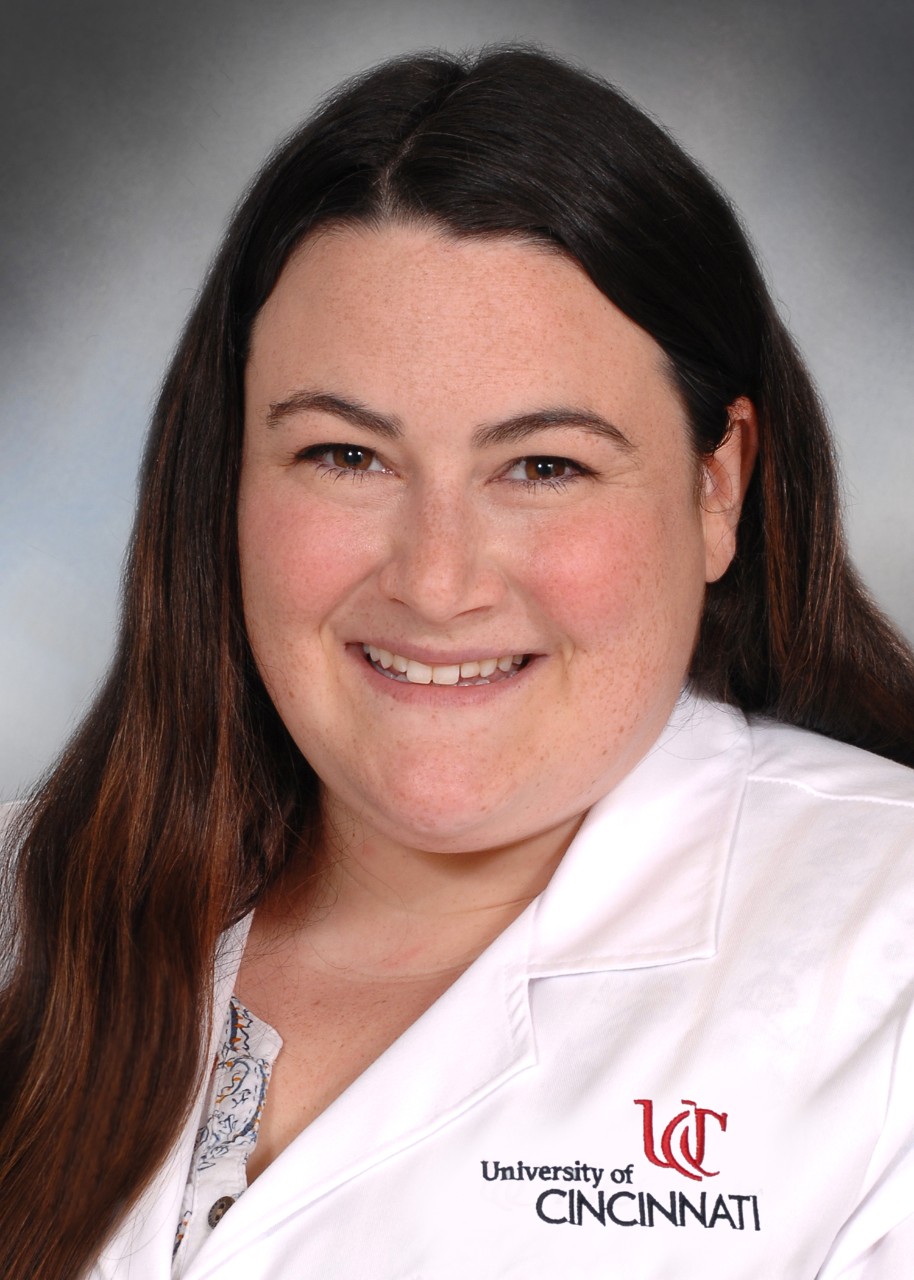
Taylor MacDonald, DO. Photo/University of Cincinnati.
After initial treatment, high-grade gliomas (HGG), a type of fast-spreading brain tumor, often recur and require additional treatment, but there is currently no standard of care for how to do so.
Cancer Center researchers including Taylor MacDonald, DO, looked at the neurologic effects of a second round of radiation delivered by traditional photon reirradiation compared to proton reirradiation. Proton therapy uses a more precise proton beam to target tumors with radiation that aims to reduce damage to surrounding healthy tissue.
The researchers found high grade neurologic toxicity appeared to occur more often and earlier with proton treatment, but survival was similar and slightly better with protons. It is unclear whether these are true findings or related to imbalances between the study arms, but the higher rate of neurologic events with proton reirradiation warrants further examination of the biologic impact of proton therapy and whether radiation doses are truly comparable between protons and photons.
The data additionally showed a correlation between proton reirradiation and increased pseudoprogression and radiation necrosis, according to MacDonald.
“Pseudoprogression is growth of a fast-growing tumor during radiation that continues to grow after radiation for a while before slowing down or stabilizing, but is ultimately not true tumor progression,” said MacDonald, a Radiation Oncology resident at the Cancer Center. “Radiation necrosis is similar but occurs due to swelling late (months or years) after radiation. Both can appear to be tumor growth or treatment failure but are expected and don’t necessarily reflect treatment failure or true tumor progression.
MacDonald said the team plans to further analyze proton therapy plans and compare them to the neurologic events patients experienced.
Impact Lives Here
The University of Cincinnati is leading public urban universities into a new era of innovation and impact. Our faculty, staff and students are saving lives, changing outcomes and bending the future in our city's direction. Next Lives Here.
University of Cincinnati Cancer Center involvement at ASTRO includes:
- Emily Daugherty, MD, serving as moderator for the session “Digital Health Innovation and Informatics” Oct. 1 from 4:45-6 p.m.
- Frankart presenting “Use of Lattice Therapy for Dose-escalation in Palliative Treatment of Bulky Head and Neck Tumors” Monday, Oct. 2, from 10:45 a.m.-noon and “Intramural Dose Escalation Using Lattice Radiotherapy for Hepatocellular Carcinoma with Unfavorable Size and Location” Tuesday, Oct. 3, from 12:45-2 p.m. Frankart is first author of the abstracts, Vinita Takiar, MD, PhD, is senior author and other co-authors are Bailey Nelson, MD, and Kumar.
- Taylor MacDonald, DO, presenting “Neurologic Events and Outcomes in Patients Receiving Proton and Photon Reirradiation for High Grade Non-Codeleted Gliomas” Oct. 2 from 10:45 a.m.-noon. MacDonald is first author and Kyle Wang, MD, serves as senior author of the abstract.
- Samuel Keltner, MD, presenting “Refining Surveillance Guidelines after SBRT for Early stage Lung Cancer” Oct. 2 from 5-6 p.m. Keltner is first author of the abstract and Takiar is senior author.
- Takiar serving as chair for educational programming for head and neck cancer for the meeting. She organized and is chairing the head and neck educational session “Sex, Screening, and Savings After Head and Neck Treatment” Oct. 3 from 8-9 a.m.
- Wang presenting “Results of a Multi-institutional Randomized Phase 3 Trial of Parotid-Sparing Whole Brain Radiotherapy” Oct. 3 from 2:30-3:45 p.m.
- Petery presenting “Head & Neck Cancer and Health Services Research” Wednesday, Oct. 4, from 10:30-11:45 a.m. Takiar is senior author of the abstract.
- Frankart presenting “Automated Lattice Treatment Planning for Bulky Tumors” Wednesday, Oct. 4, from 12:30-1:45 p.m. Kumar is first author of the abstract, Frankart is senior author and Takiar and Nelson were co-authors.
Featured photo at top of CT machine. Photo/Colleen Kelley/UC Marketing + Brand.
Related Stories
Head and neck, breast cancer research highlights AACR abstracts
April 14, 2023
University of Cincinnati Cancer Center researchers will present more than a dozen abstracts at the American Association for Cancer Research Annual Meeting 2023, held in Orlando, Florida, April 14-19, including findings that could advance treatments for head and neck and breast cancers.
UC radiation oncology experts present at national conference
September 29, 2023
University of Cincinnati Cancer Center researchers will present abstracts at the American Society for Radiation Oncology (ASTRO) Annual Meeting, held Oct. 1-4 in San Diego.
Using electricity to treat cancer
April 12, 2022
The University of Cincinnati's Kyle Wang, MD, is the site principal investigator for the Trident trial, studying the effectiveness of earlier electrical treatment through Optune devices to treat glioblastomas.
